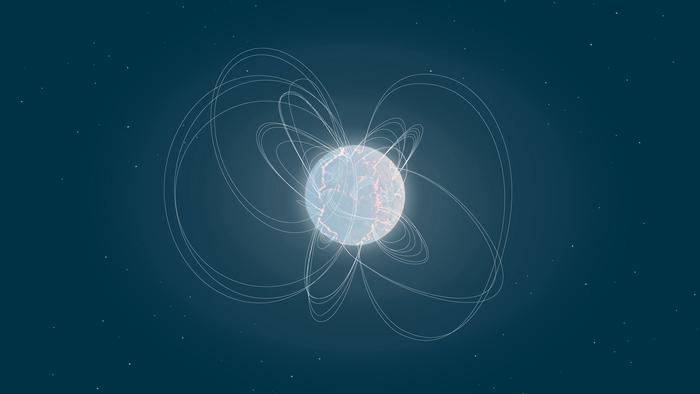Scientists see giant, powerful flare coming from nearby star

Your support helps us to tell the story
This election is still a dead heat, according to most polls. In a fight with such wafer-thin margins, we need reporters on the ground talking to the people Trump and Harris are courting. Your support allows us to keep sending journalists to the story.
The Independent is trusted by 27 million Americans from across the entire political spectrum every month. Unlike many other quality news outlets, we choose not to lock you out of our reporting and analysis with paywalls. But quality journalism must still be paid for.
Help us keep bring these critical stories to light. Your support makes all the difference.
Scientists have seen a sudden explosion coming from a rare object in a nearby galaxy.
Researchers believe that the burst must be giant flare erupting out of a magnetar, a kind of neutron star. It offers an opportunity to study an incredibly rare event – and could help explain other kinds of unusual activity in the universe.
Such giant flares are so unusual that we have only seen three of them in our galaxy and the nearby Large Magellanic Cloud in the last 50 years. Seeing them from further away can be difficult because it is hard to know where they are coming from.
Those giant flares can be incredibly powerful. In 2004, one hit us from 30,000 light years away but was still able to affect the Earth’s atmosphere.
Late last year, the European Space Agency’s INTEGRAL satellite spotted what appeared to be an explosion in part of the sky. For just a tenth of a second, the sky was lit with a burst of energetic gamma-rays.
Astronomers across the world were sent an urgent alert about the event, which arrived just 13 seconds later. It showed that it had come from the galaxy M82, which is relatively nearby at 12 million light-years away.
“We immediately realised that this was a special alert. Gamma-ray bursts come from far-away and anywhere in the sky, but this burst came from a bright nearby galaxy,” said Sandro Mereghetti of the National Institute for Astrophysics (INAF–IASF) in Italy, who led the work on the new study.
Researchers quickly rushed to examine the location of the burst, expecting that they might see the gravitational waves and glow of X-rays and light that are usually left behind when two neutron stars collide.
But they could only see hot gas and stars. There were no X-rays or light signals to be seen, and no gravitational waves.
That led researchers to believe that the signal came from a magnetar, a kind of neutron star with a particularly powerful magnetic field. They throw out flares – which are sometimes huge, but very rarely.
It is the first firm confirmation of such a magnetar flare having come from outside of our own Milky Way galaxy. It came from M82, a bright galaxy that is forming stars in a churning process that sees them born, and then quickly live violent lives that end in a neutron star.
Join our commenting forum
Join thought-provoking conversations, follow other Independent readers and see their replies
Comments